18.5 x 10.5 mm Ancient Roman Mosaic Glass bead 2 BC- 2 AD #Yo06
Ancient Mosaic Glass Bead. Was excavated in North Black Sea Region - ancient Tavrida, now days Crimea and dated 2 BC-2 AD.
Collectors! This is a bead from my personal collection. I'm not really in a rush to sell this bead but I really want to show my beads. Please do not ask me for discount for this bead
18.5 mm x 10.5mm
There are no repairs. This glass bead shows a beautiful original patina and wear. Expected corrosion and wear are a consequence of age and extended burial. For more information about Pantikápaion go to http://en.wikipedia.org/wiki/Panticapaeum * PLEASE ADD ME TO YOUR FAVORITES LIST *
ATTENTION !!!!!! Most photographs have been enlarged to show details, so items may appear larger than their actual size. Colors appearing on the viewers computer may appear different in comparison to the original object.
----------------------------------------------------------------------------------------------------------------------------------------------
Pantikápaion) antique city in the eastern Crimea (modern Kerch). Founded in the 1 st half of 6. BC. er. came from Miletus. May have previously located there Ionian trading station (Emporia). The city's name probably dates back to the Iranian roots: Pantikapaion - fishy way that could denote fishy Kerch Strait, on the shores of which the city was founded. Pantikápaion quickly turned into a major city, ahead of the other Greek settlements in the area. Already in the 2 nd half of the 6. BC. er. Pantikápaion began to mint its silver coin (a 4-in. BC. E .- and a gold and copper). In the 1 st half of the 5. BC. er. around P. united the Greek city located on both sides of the Kerch Strait (Cimmerian Bosporus), which formed the Bosporus state. Pantikápaion as its capital and the main shopping, crafts and cultural center. In its heyday P. occupied about 100 hectares. Back in 6. BC. er. He was surrounded by a defensive wall. The city settled on the slopes and foothills of the Rocky Mountains (modern Mount Mithridates). At the top was the acropolis with temples and public buildings. The slopes of the mountains were girded with artificial earthen terraces, on which the house passed the street, connecting streets, staircases. Terraces supported by stone retaining walls. The city has a good harbor.
Turbulent political events of the late 2.1 cc. BC. er. (Savmaka uprising, taking the city Diophantus, the war of Mithridates VI Eupator (See Mithridates VI Evpator)), as well as a strong earthquake in the 60-ies. 1. BC. er. probably led to significant damage to the Pantikápaion, and demanded large reconstruction. In 1.2 cc. Mr. er. PA remained a major industrial and commercial center (archaeological site discovered numerous wineries, pottery kilns, complex household pits for grain storage, etc.).
In the 3-4 centuries. there was a noticeable reduction in handicraft production and increased agricultural of the population, which was associated with the overall economy and the collapse of the naturalization of slave relations. The city gradually fell into disrepair. In the middle of 3. P. and all the Bosporus became a base for pirate raids of German, Dacian and other tribes on the coast of the Black and Mediterranean seas. At the end of 4. PA was destroyed by the Huns, leaving only a small town that existed, and in time. In the early Middle Ages it was called the Bosporus.
Around the Pantikápaion antique city in the eastern Crimea (modern Kerch). Founded in the 1 st half of 6. BC. er. came from Miletus. May have previously located there Ionian trading station (Emporia). The city's name probably dates back to the Iranian roots: Pantikapaion - fishy way that could denote fishy Kerch Strait, on the shores of which the city was founded. Pantikápaion quickly turned into a major city, ahead of the other Greek settlements in the area. Already in the 2 nd half of the 6. BC. er. Pantikápaion began to mint its silver coin (a 4-in. BC. E .- and a gold and copper). In the 1 st half of the 5. BC. er. around P. united the Greek city located on both sides of the Kerch Strait (Cimmerian Bosporus), which formed the Bosporus state. Pantikápaion as its capital and the main shopping, crafts and cultural center. In its heyday P. occupied about 100 hectares. Back in 6. BC. er. He was surrounded by a defensive wall. The city settled on the slopes and foothills of the Rocky Mountains (modern Mount Mithridates). At the top was the acropolis with temples and public buildings. The slopes of the mountains were girded with artificial earthen terraces, on which the house passed the street, connecting streets, staircases. Terraces supported by stone retaining walls. The city has a good harbor.
In the 3-4 centuries. there was a noticeable reduction in handicraft production and increased agricultural of the population, which was associated with the overall economy and the collapse of the naturalization of slave relations. The city gradually fell into disrepair. In the middle of 3. Pantikápaion. and all the Bosporus became a base for pirate raids of German, Dacian and other tribes on the coast of the Black and Mediterranean seas. At the end of 4. Pantikápaion was destroyed by the Huns, leaving only a small town that existed, and in time. In the early Middle Ages it was called the Bosporus.
Around the Pantikápaion has a vast necropolis, consisting of ground tombs and burial mounds. The most famous stone tomb barrows 3.4 cc. BC. er. and crypts with painting the first centuries. er. Excavations PA. and its necropolis began in the 1 st half of 19. (Mostly dug mounds). Ground burials have been widely studied in the early 20 century.
Pantikápaion has a vast necropolis, consisting of ground tombs and burial mounds. The most famous stone tomb barrows 3.4 cc. BC. er. and crypts with painting the first centuries. er. Excavations PA. and its necropolis began in the 1 st half of 19. (Mostly dug mounds). Ground burials have been widely studied in the early 20 century.
Hi! My name is Elena.
I’m collecting ancient beads from 1979. Most of my beads were found in Turkmenistan and Uzbekistan. To be precise they were found between Mary city (Turkmenistan) and Samarkand (Uzbekistan). That area in past was called Bactria. Nowadays there are a lot of ruins older than 2000 years in this region.
Unpaid items will be automaticly relisted after 21 days.
THIS ANCIENT MOSAIC GLASS BEAD IS 100% GENUINE. Please, ask for more pictures for each bead. ATTENTION !!!!!! Most photographs have been enlarged to show details, so items may appear larger than their actual size. Colors appearing on the viewers computer may appear different in comparison to the original object. . Please Check Pictures for Details.
Authenticity Guaranteed for full Refund.
We combine shipping for $ 0.50 each addition item
- Original/Reproduction: Original
PicClick Insights - 18.5 x 10.5 mm Ancient Roman Mosaic Glass bead 2 BC- 2 AD #Yo06 PicClick Exclusive
- Popularity - 3 watchers, 0.0 new watchers per day, 1,979 days for sale on eBay. High amount watching. 1 sold, 0 available.
- Best Price -
- Seller - 3,642+ items sold. 0% negative feedback. Great seller with very good positive feedback and over 50 ratings.
People Also Loved PicClick Exclusive
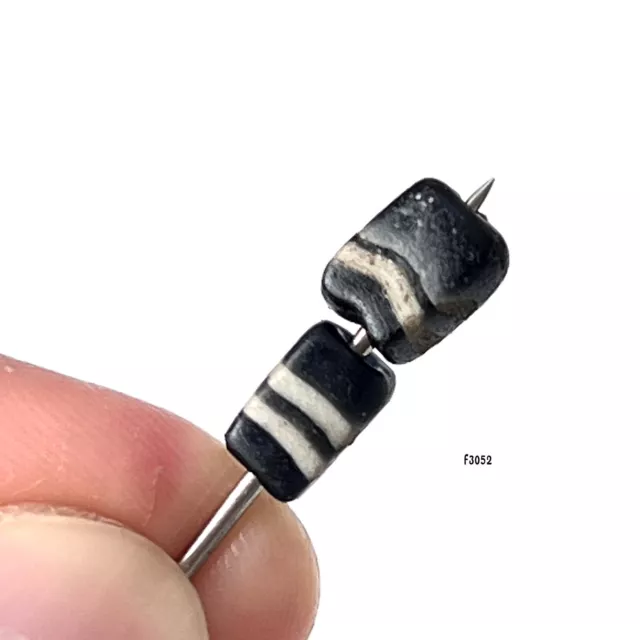 4 watchers
4 watchersRARE ANCIENT ROMAN MOSAIC GLASS BEADS 1000-2000++ 8x5, 8x6 MM #F3052
$68.38 Buy It Now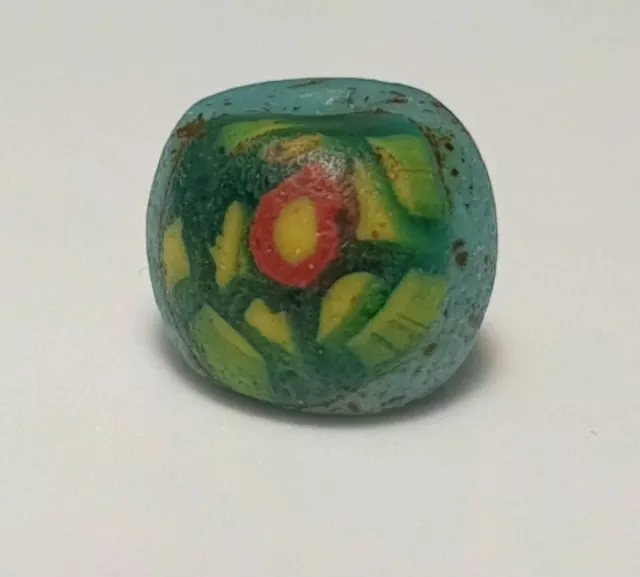 7 watchers
7 watchersAncient Rare Roman Mosaic Eye Glass Bead
$67.03 Buy It Now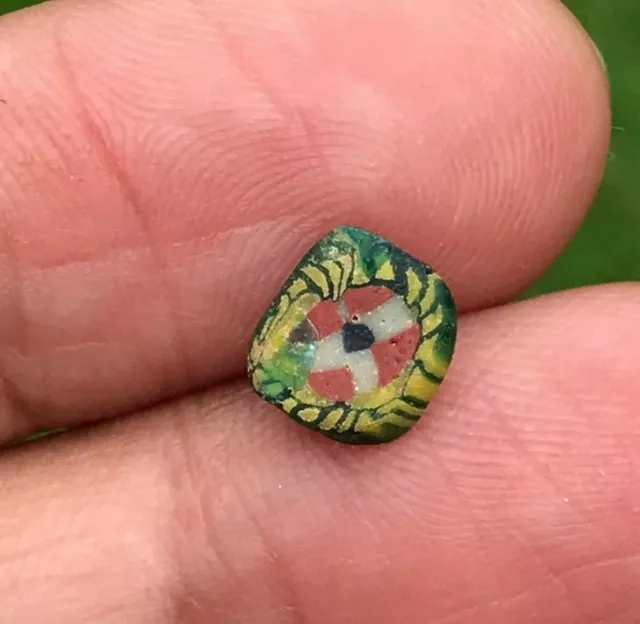 6 watchers
6 watchersRare Ancient Roman Mosaic Glass Bead 1000-2000+ 7.5X2Mm #B196
$82.06 Buy It Now 1 watcher
1 watcher 13mm Ancient Roman Mosaic Glass Bead, 1800+ Years Old, #108$68.40 Buy It Now
13mm Ancient Roman Mosaic Glass Bead, 1800+ Years Old, #108$68.40 Buy It Now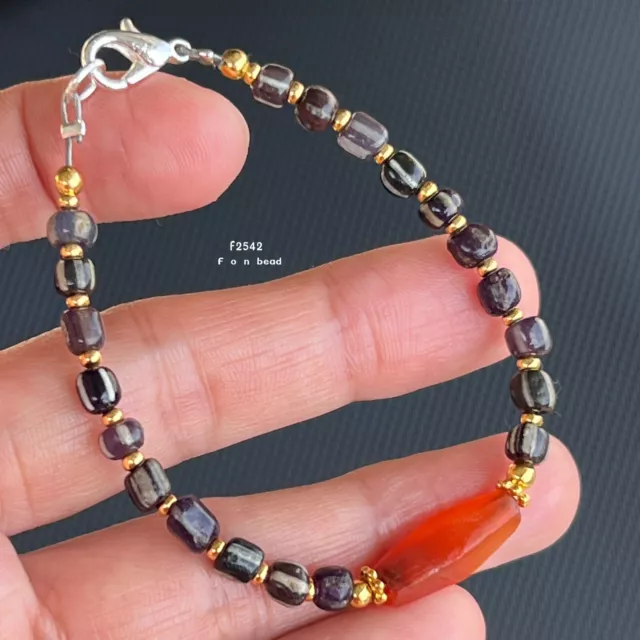 2 watchers
2 watchersRARE ANCIENT ROMAN MOSAIC GLASS BEAD AND CARNELIAN BRACELET NOT Gold #F2542
$136.78 Buy It Now
 10mm Ancient Roman Mosaic Glass Fragment, 1800+ Years Old, #120$54.72 Buy It Now
10mm Ancient Roman Mosaic Glass Fragment, 1800+ Years Old, #120$54.72 Buy It Now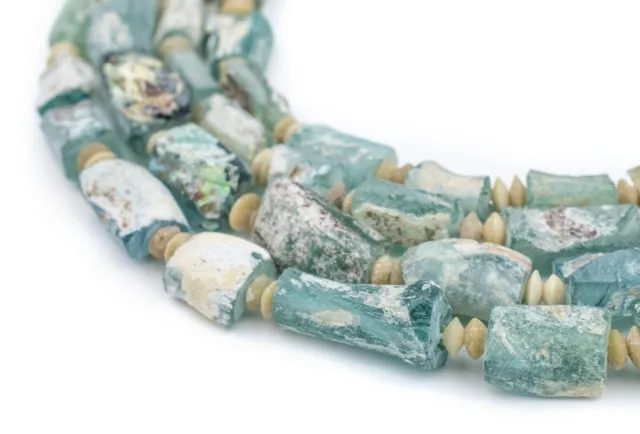 13 watchers
13 watchers Rectangular Ancient Roman Glass Beads Pastel Colors 11mm Afghanistan Blue$33.51 Buy It Now
Rectangular Ancient Roman Glass Beads Pastel Colors 11mm Afghanistan Blue$33.51 Buy It Now
 11mm Ancient Roman Mosaic Glass Bead, 1800+ Years Old, #107$82.08 Buy It Now
11mm Ancient Roman Mosaic Glass Bead, 1800+ Years Old, #107$82.08 Buy It Now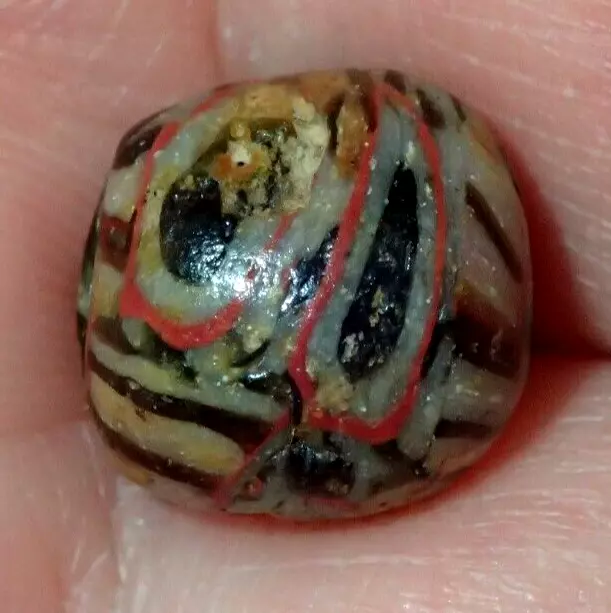
 11mm Ancient Roman Mosaic Glass Bead, 1800+ Years Old, #113$82.08 Buy It Now
11mm Ancient Roman Mosaic Glass Bead, 1800+ Years Old, #113$82.08 Buy It Now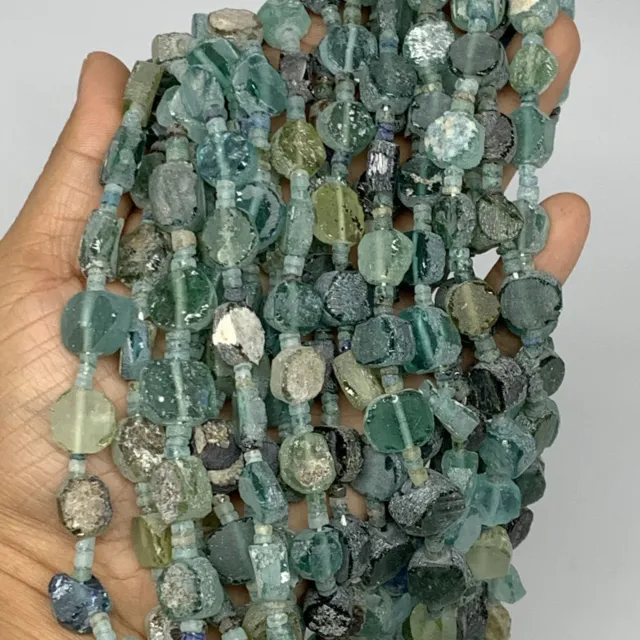 30 watchers
30 watchers 1 Strand,3mm-15mm,15"Ancient Rough Round Roman Glass Beads Strand @Afghanistan,
1 Strand,3mm-15mm,15"Ancient Rough Round Roman Glass Beads Strand @Afghanistan,$54.70$16.42 Buy It Now
 10.5mm Ancient Roman Mosaic Glass Bead, 1800+ Years Old, #114$54.72 Buy It Now
10.5mm Ancient Roman Mosaic Glass Bead, 1800+ Years Old, #114$54.72 Buy It Now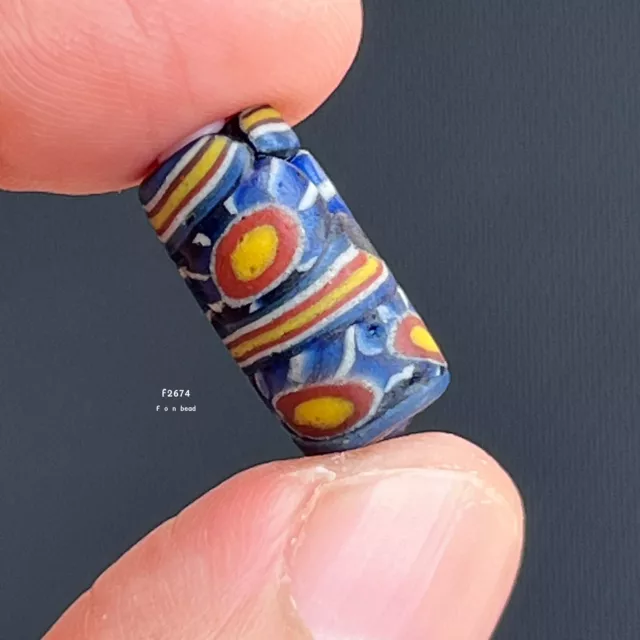 2 watchers
2 watchersRARE ANCIENT ROMAN MOSAIC GLASS BEAD 1000-2000++ 17x8.5 MM #F2674
$314.61 Buy It Now
 13mm Ancient Roman Mosaic Glass Bead, 1800+ Years Old, #106$54.72 Buy It Now
13mm Ancient Roman Mosaic Glass Bead, 1800+ Years Old, #106$54.72 Buy It Now 48 watchers
48 watchers Ancient Roman Glass Tube Beads 15mm - 20mm, 15" strand$21.87 Buy It Now
Ancient Roman Glass Tube Beads 15mm - 20mm, 15" strand$21.87 Buy It Now 17 watchers
17 watchers Circular Ancient Roman Glass Beads 8-11mm Afghanistan Multicolor Tabular$29.41 Buy It Now
Circular Ancient Roman Glass Beads 8-11mm Afghanistan Multicolor Tabular$29.41 Buy It Now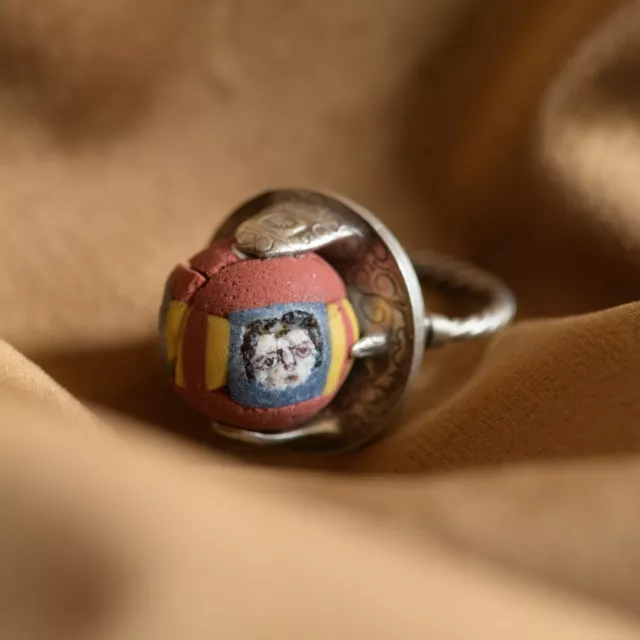 5 watchers
5 watchersFinger ring with genuine ancient Roman glass mosaic face bead
$1,094.36 Buy It Now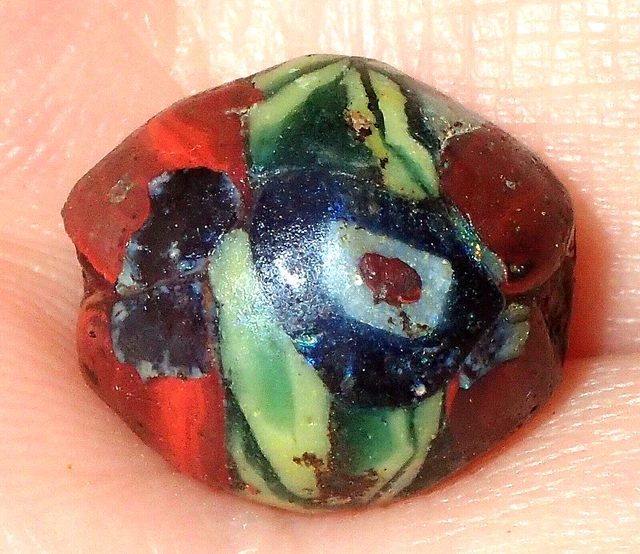
 13.5mm Ancient Roman Mosaic Glass bead, 1800+ Years Old, #S4252$410.38 Buy It Now
13.5mm Ancient Roman Mosaic Glass bead, 1800+ Years Old, #S4252$410.38 Buy It Now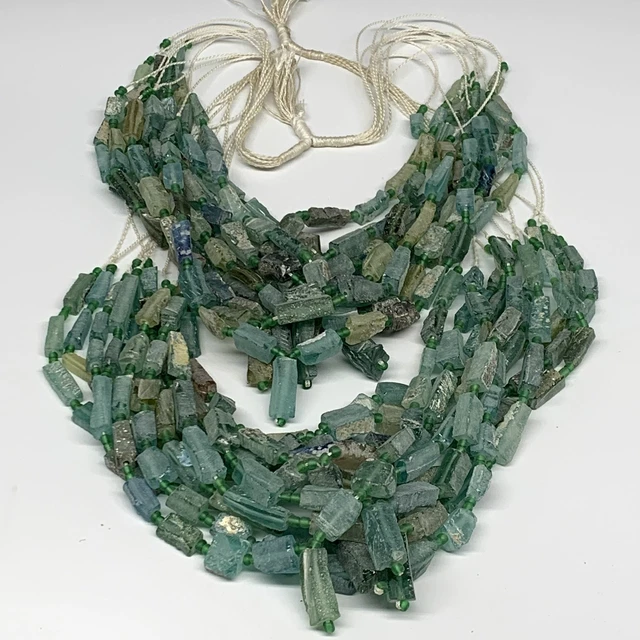 61 watchers
61 watchers 1 Strand,12mm-32mm,14"Ancient Rough Rectangle Tube Roman Glass Beads Strand @Afg
1 Strand,12mm-32mm,14"Ancient Rough Rectangle Tube Roman Glass Beads Strand @Afg$61.54$18.47 Buy It Now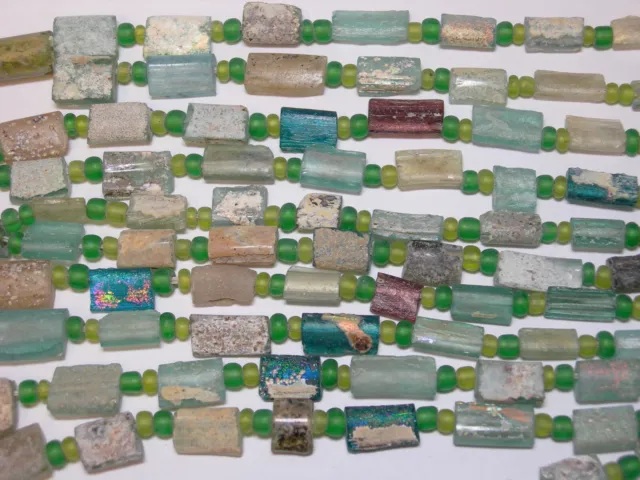 6 watchers
6 watchers Ancient Roman Glass Patina Flat Rectangle Beads apx 10mm - 15mm, 16" strand$25.98 Buy It Now
Ancient Roman Glass Patina Flat Rectangle Beads apx 10mm - 15mm, 16" strand$25.98 Buy It Now
 13.5mm Ancient Roman Mosaic Glass Bead, 1800+ Years Old, #104$54.72 Buy It Now
13.5mm Ancient Roman Mosaic Glass Bead, 1800+ Years Old, #104$54.72 Buy It Now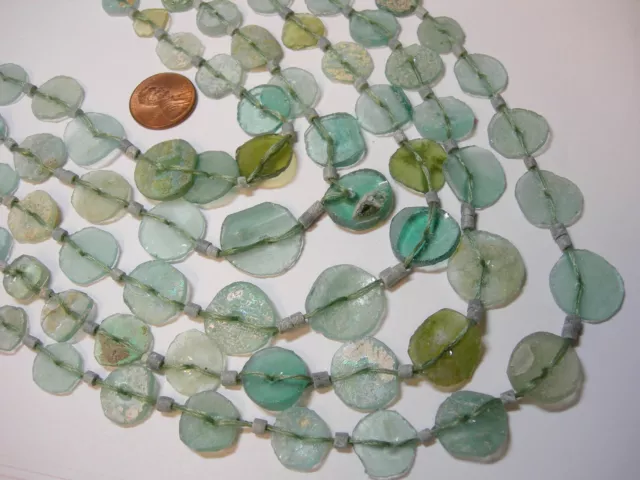 37 watchers
37 watchers Ancient Roman Glass Beads 8mm - 18mm, graduated discs patina 16" strand$25.98 Buy It Now
Ancient Roman Glass Beads 8mm - 18mm, graduated discs patina 16" strand$25.98 Buy It Now
 11mm Ancient Roman Mosaic Glass Bead, 1800+ Years Old, #102$68.40 Buy It Now
11mm Ancient Roman Mosaic Glass Bead, 1800+ Years Old, #102$68.40 Buy It Now
 11mm Ancient Roman Mosaic Glass Bead, 1800+ Years Old, #111$82.08 Buy It Now
11mm Ancient Roman Mosaic Glass Bead, 1800+ Years Old, #111$82.08 Buy It Now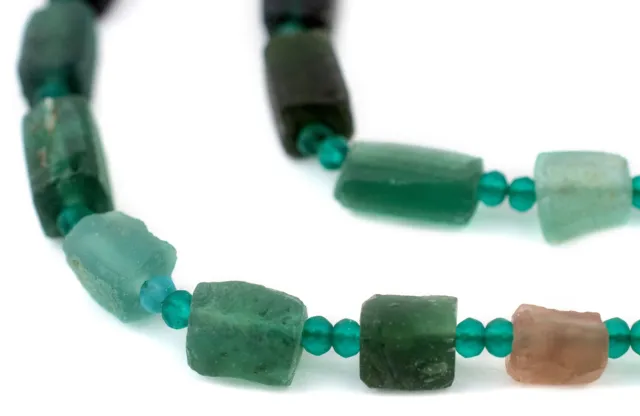 45 watchers
45 watchers Rectangular Ancient Roman Glass Beads Dark 11mm Afghanistan Green Rectangle$33.51 Buy It Now
Rectangular Ancient Roman Glass Beads Dark 11mm Afghanistan Green Rectangle$33.51 Buy It Now 8 watchers
8 watchers Ancient Roman Glass Faceted Nugget Beads graduated apx 6mm - 15mm 16" strand$24.61 Buy It Now
Ancient Roman Glass Faceted Nugget Beads graduated apx 6mm - 15mm 16" strand$24.61 Buy It Now


